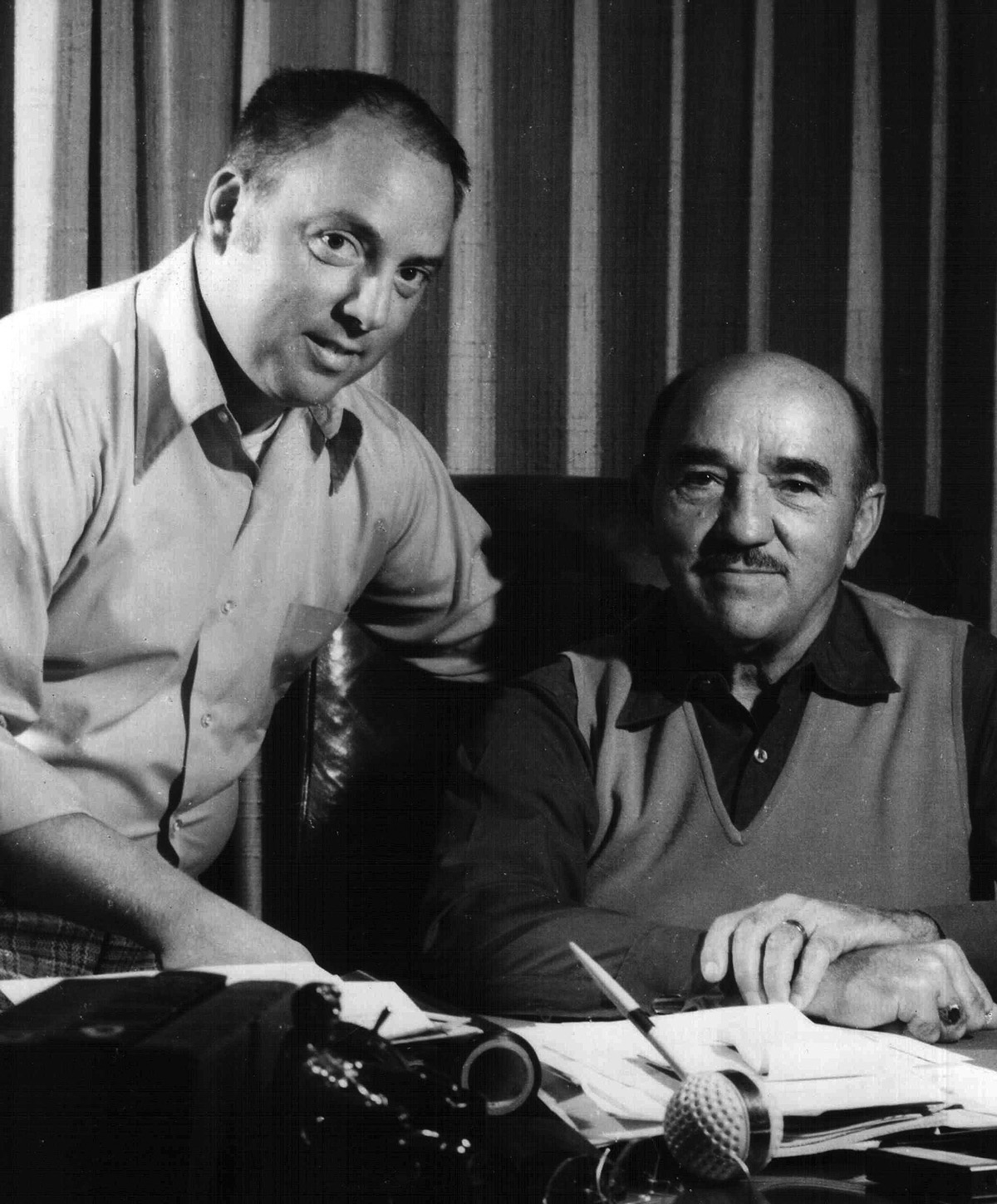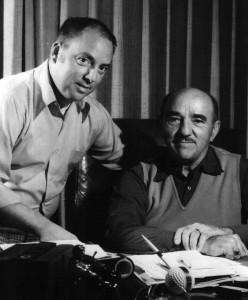By Henry M. Holden
By profession, George Priester was a locomotive engineer for the Chicago and Northwestern Railroads, but he loved airplanes. Priester soloed in 1928 and founded his flight training school in 1945, at Palwaukee Airport (PWK), Ill.
“My dad had a vision of building more than a school to provide flight training to the thousands of returning WWII veterans,” said his son, Charles.
“He saw a real demand for instrument flight training,” Priester said. “Between 1945 and 1953, he expanded the business from a flight school into a charter operation.”
Affiliated with aviation since the early 1950s, Charles Priester helped develop and grow his father’s company, George J. Priester Aviation Service, into one of the Midwest’s leading aviation organizations and airports.
“We come from a family that doesn’t think hard work is immoral, and I began working at the airport around the 6th grade,” Priester said. “This was an exciting time, and I was part of a family business. Along with my sisters, I helped make the family business grow and prosper. I thought growing up around airplanes was terrific.”
Priester feels his father was ahead of the curve—a true visionary. He started in the early days with the idea that airplanes were business tools, and all decisions the company has made since then have been based on that premise.
The decision to buy Palwaukee Airport
Charles Priester said that back in the late 1940s and early 50s, the business of airplane sales was very profitable.
“At that point, there were 27 private airports in the Chicago area. My dad thought that there was money to be made in aircraft sales, but he didn’t think that was the long-term, consistent foundation of the industry.”
Back then, George Priester believed that the opportunity of the near future was servicing airplanes. He wanted to provide fuel, hangars and aircraft maintenance. Priester reasoned that his family should own an airport. In those days, most of his associates who owned airports focused on sales rather than service.
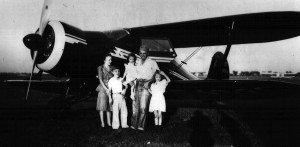
This family photo shows George Priester, his wife and three children. Priester bought this Beechcraft Staggerwing shortly after purchasing Palwaukee Airport.
George and son Charlie soon began developing much of Palwaukee Airport into what it is today. “When we bought the airport from Parks College, who had used it during WWII as a military training field, there were two hangars plus some ‘T’ hangars, and the longest runway was 2,800 feet of cinders,” Priester remembered. “The timing was right for us because aviation activity was high, and there were people beginning to use the airplane for business purposes. Our flight training business was good, but we literally went into the full-service business overnight when we bought the airport. We had the infrastructure, the hangars, the maintenance crew and fuel service. It was all part of the package and the aviation community we were trying to serve.”
The family constructed five paved and lighted runways, one of which was over 5,000 feet long in anticipation of the coming jet age. They also paved several taxiways and ramps while constructing a hangar and fueling and maintenance facilities.
“The airport consisted of 108 acres, and there wasn’t a square inch of blacktop at the airport. The paving of the runways was all part of the development,” Priester said. “We bought property piece by piece as we expanded the airport, and as part of that process, we started paving runways. The first was the East/West 12-30 runway in 1954 and 1955.”
With growth comes bigger issues
The regulatory process became more difficult as the Priesters’ airport grew. “We liked the private airport business—the ability to operate and be flexible as a private business,” Priester said. “What we didn’t have, and what has never been available to a private airport, was zoning protection and the ability to govern yourself. Private airports were taxed at a high rate, so we had those issues to deal with, too. By that time (1984), we probably had 25 aircraft based at the airport.”
Then the Priesters faced one of their biggest challenges yet. A company had purchased a piece of property right at the end of one of their runways, and the owner was “clearly an extortionist,” Priester said. “He had pulled a stunt at another airport where he had threatened to build a tall building on the end of their east/west runway, and he proceeded do the same with us. He threatened to build right off our 5,000-ft. runway if we didn’t pay his exorbitant price for the land.”
A lawsuit follows

Gov. Jim Edgar presents Charles Priester with an award in the early 1990s. Priester and his father took a small cinder-packed runway and turned Palwaukee Airport into one of the leading general aviation airports in the country.
The Priester family filed suit, and since their business was a private airport, the users were entitled to the same degree of safety as a municipal field. “He couldn’t pull that stunt with a municipal field,” Priester said. “I think the only thing that saved us was that the individual was clearly just obnoxious. It was very apparent that he did not intend to build; he was just trying to hold us up.”
Priester recalled that the judge was not impressed with this individual, reprimanded him from the bench and ruled against him. Afterward, the judge called Charles Priester into his chambers. He said, “Priester, I’ve just done something that won’t pass muster. This case will be overturned on appeal because you don’t own the air rights over that man’s property. He can build anything he wants to on it. Therefore, if I were you, I would decide how you’re going to deal with your problem.”
Priester said that talking to the judge made his decision relatively easy. “We wanted to continue on as an airport, and we knew we had a good location relative to Chicago’s O’Hare (ORD). At that point, we were the number one reliever for O’Hare, and we still are. Corporate users need an airport like this. It is great location, and you know the expression for airports—location, location, location.”
Mr. Priester in Washington
The first thing Priester did was go to Washington, D.C., to have a discussion with the FAA administrator, who at that time was Len Helms. “I explained to him what was going on, and he said that we had to keep it as an airport,” said Priester. “He told me if I could figure out how to do it, they would provide FAA funding.”
Then Priester went to the director of aeronautics for the State of Illinois. He felt the same way. “We embarked on a program with the cooperation of the two communities bordering the airport, Wheeling and Prospect Heights,” Priester explained. “We started down the path with hearings and all the other steps that go into the process, and we were finally able to close the sale. The sale to the communities provided the zoning protection for the airport. The FAA funding provided 30 years of grant assurances, condemnation privileges and the zoning requirements to keep the airport safe from future interlopers.”
Built on fuel sales
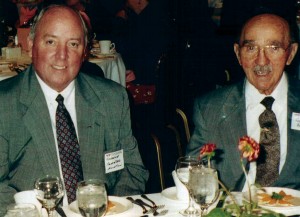
Charles and George Priester are seen here at a local Chamber of Commerce event. Currently, Charles is actively involved in many community and charitable organizations such as the University of Chicago Cancer Center.
According to Priester, the aviation industry was built on profits from fuel sales, especially with the introduction of the jet age.”In the early days of jets, especially in the mid-1950s, we had the Lears, the Sabreliners, Jet Commanders and the Hawkers. The technology in those days meant that anytime you landed, you were out of gas,” he said. “You needed to buy fuel, no question about that. Well, that makes for a good business and frankly, under private ownership, we didn’t have any competition at the airport. When someone landed, we had the obligation to provide them with superior service, but there was also a need—they had to buy gas.”
New engine, new paradigm
When the fan-jet engine was introduced, fuel efficiency was increased by about 30%. The competitive environment changed for those service providers selling fuel. The competition for fuel sales was not only between the local operators, but those at the last stop and the next stop.
In 2001, Priester said that the Gulfstream IV expanded the competition for fuel sales not only to the last and next stops, but to the previous two or three stops and future landings. Priester’s advice: “If I were the director of flight operations for a company, I would go to the chain operators and make a package deal. I would go to all the locations where they provided fueling service and ask if they’d give me a contract price.”
Priester compares the situation to Wal-Mart and a “mom and pop” store. “I reasoned that either we had to become a chain operator or we were doomed. If there was a situation where a quality service provider or FBO was in a high-rent district (such as Chicago, D.C. or New York), it would be almost impossible to compete as an individual because you can’t cut prices and retainquality. And the price is certainly not going to go down because airport land is expensive.”
Priester told his partners that unless they wanted to go out and aggressively begin to build a chain operation, he thought it was the right time to sell part of the business. They agreed and sold the maintenance facility and FBO to Signature Flight Support.
“When we sold to Signature and created Priester Aviation, LLC, we had about six jets, and that was a business that Signature Flight Support did not want to be in. So we kept that part of the business and became strictly a charter and aircraft management corporation,” Priester said.
The future
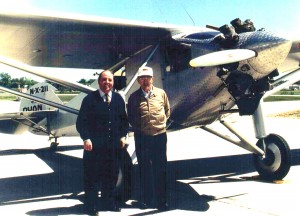
On the anniversary of Lindbergh’s famous flight, George (right) and son Charlie pose in front of a replica of the Spirit of St. Louis.
Currently, Charles Priester is chairman and CEO of Priester Aviation, LLC. However, he has no plans to retire anytime soon.
“I like what I’m doing, and I like the people. I think with the present state of the economy and the industry, it isn’t a bad idea to have a few guys with white (or no) hair around who have experience from over the years,” he said. “We can all put our heads together and work through the present situation. My son, Andy, oversees most of the day-to-day operations, and I’m here five to six days a week. But I’m at a point where if I want to take a week off, I can.”
Priester enjoyes seeing the “young” people, like his son, pick up and do the things he used to do. “It’s like looking in reverse. I can remember some of the differences my dad and I had, and I see the same thing between Andy and me, not necessarily philosophical differences,” he said. “We’re in the computer age where 99% of the things we do are on computers, and they’re for the younger people.”
Now in its third generation of Priester leadership, the company operates four locations around the Midwest. With its home base at Chicagoland’s Palwaukee, the company has facilities in Milwaukee, Wis., Minneapolis, Minn., and St. Louis, Mo.
By percentage of flying, Priester operates about 70% Part 135 and 30% Part 91. They offer premium services with a fleet of world-class aircraft to over 6,000 regional airports across the country, which is three times the number of airports served by commercial airlines.
Priester Aviation manages and charters 35 corporate jet aircraft nationwide and provides a variety of aircraft administrative and management services. These services range from representing buyers and/or sellers during the purchase or sale of aircraft, aircraft charter, flight department management and aviation consulting.
Visit the Priester family online at [http://www.PriesterAV.com].











